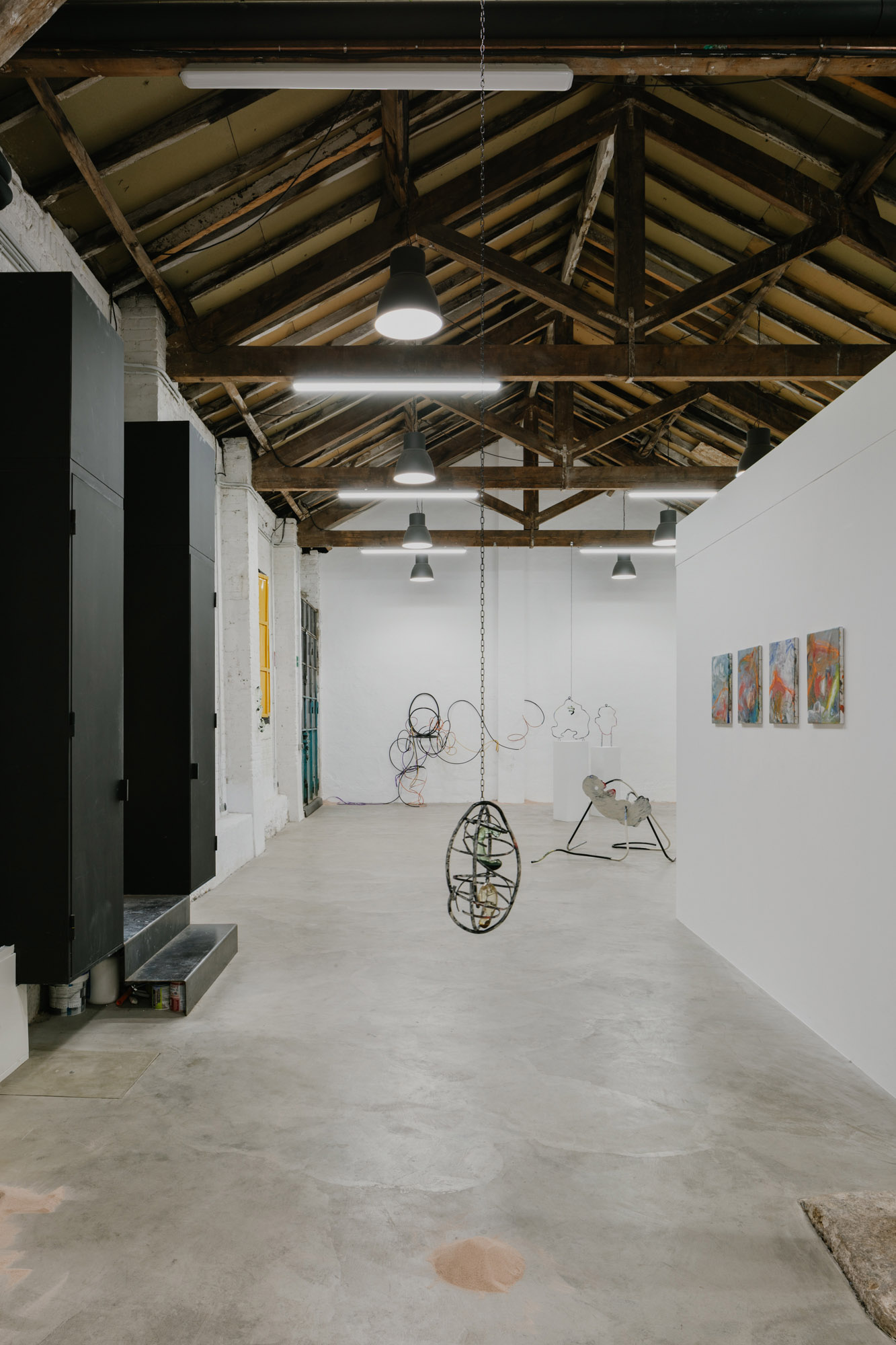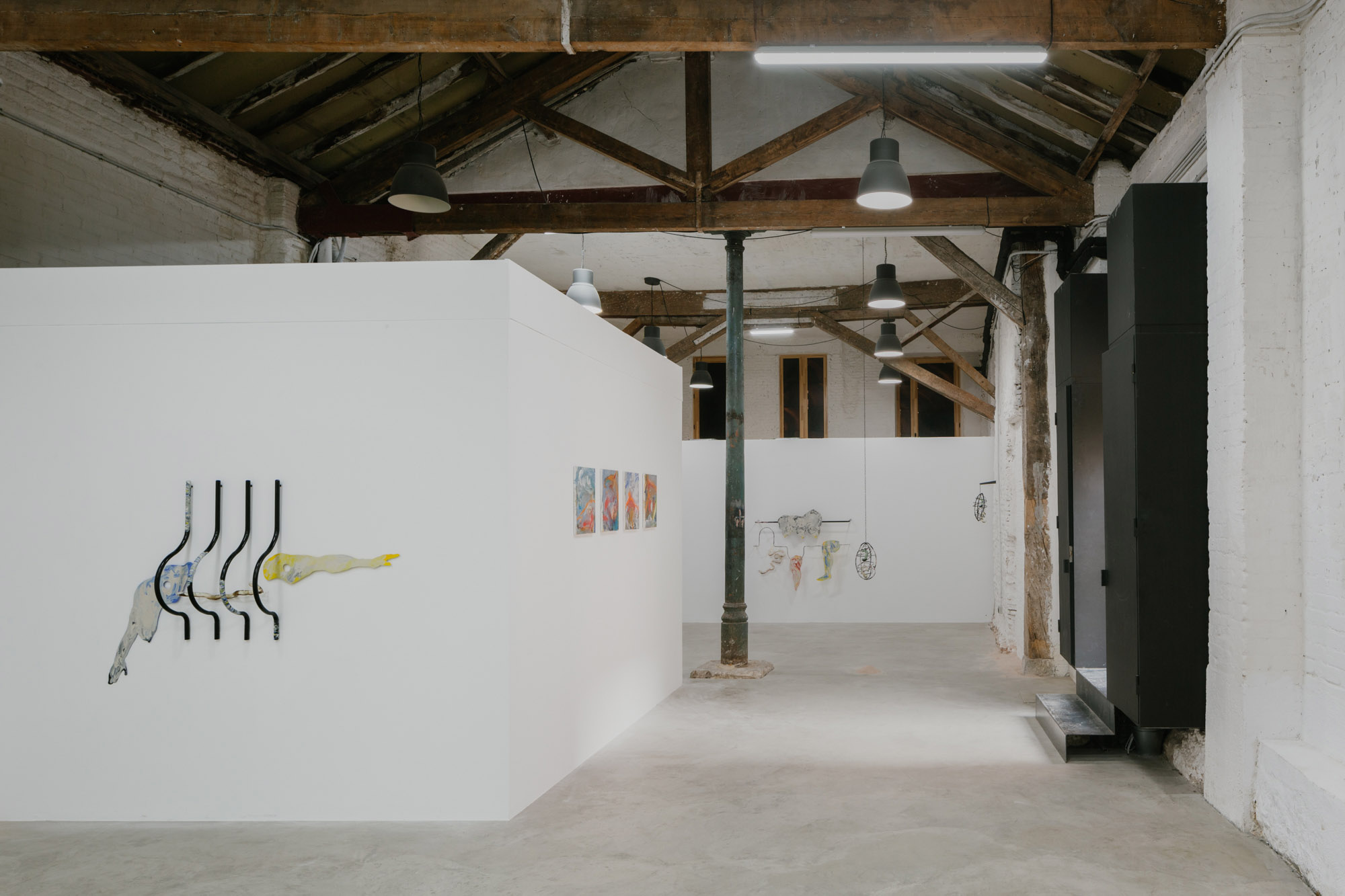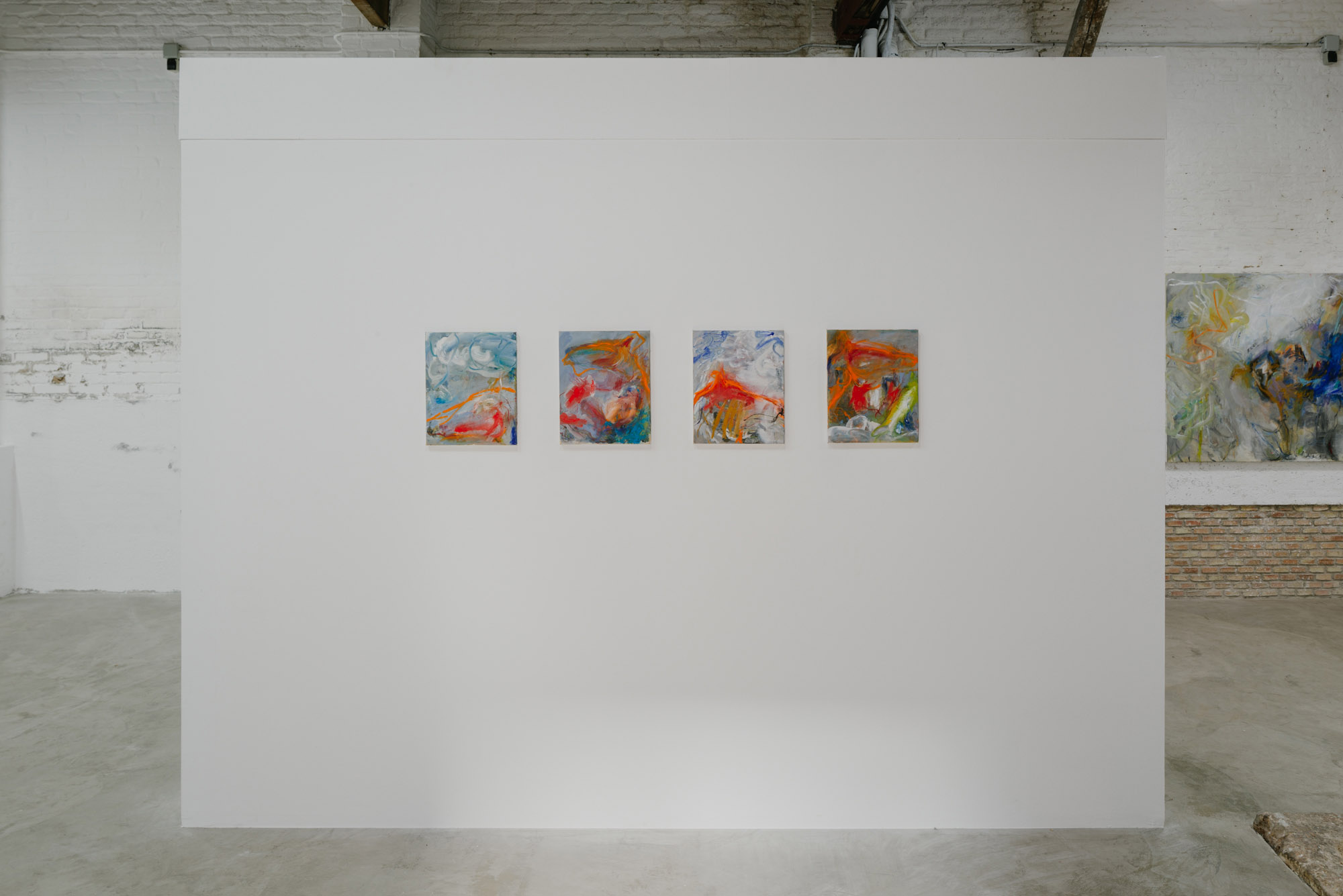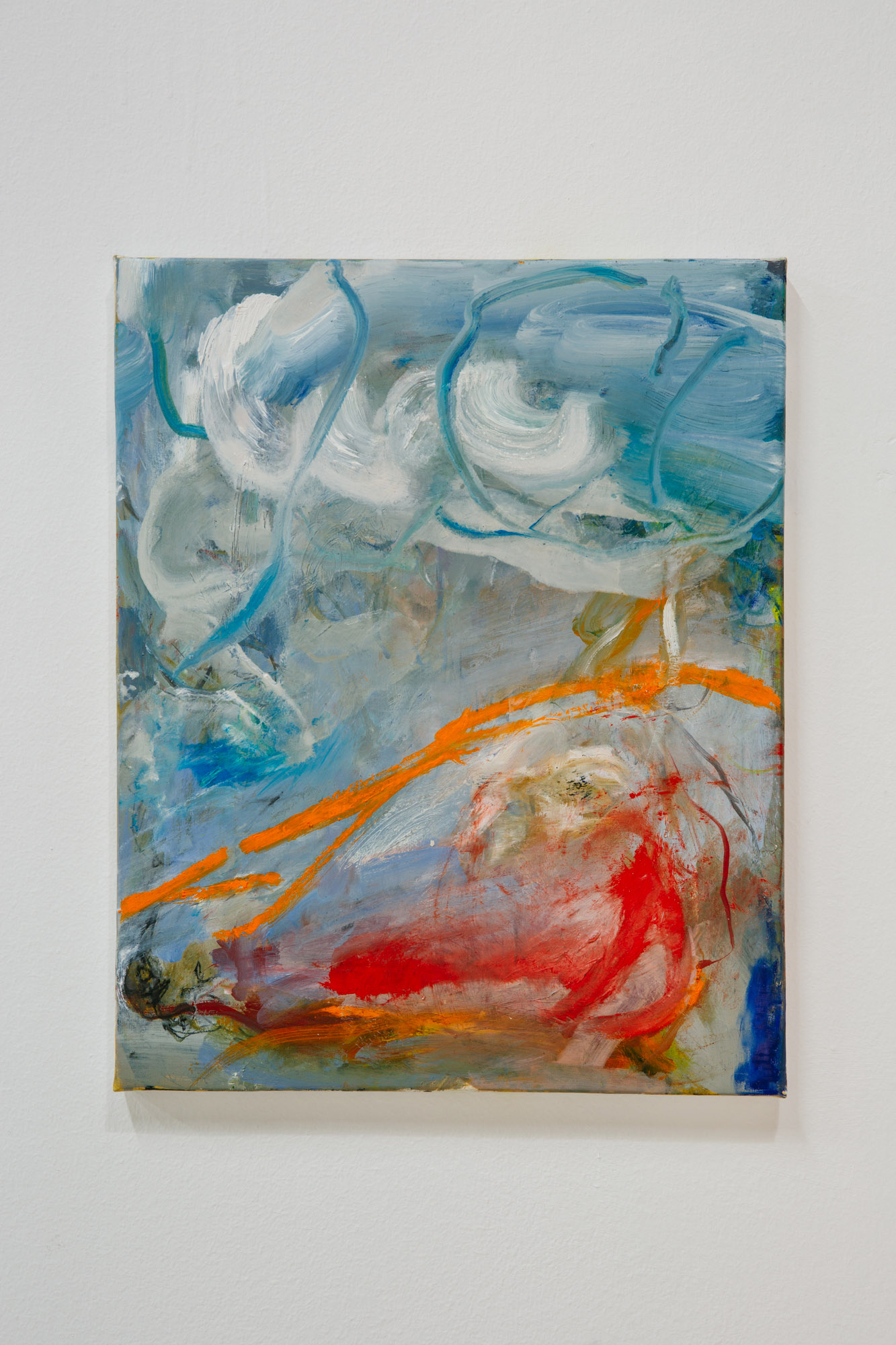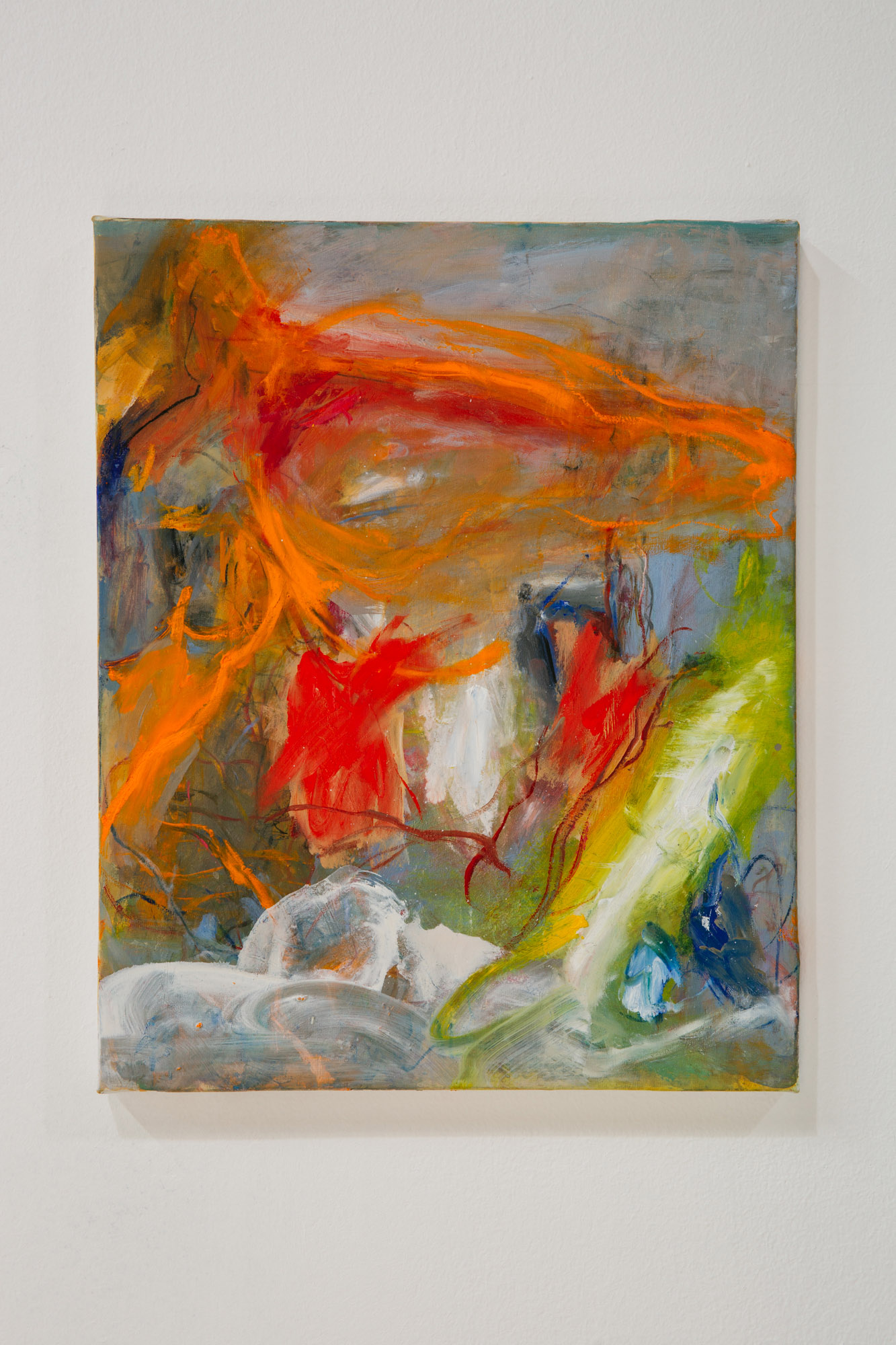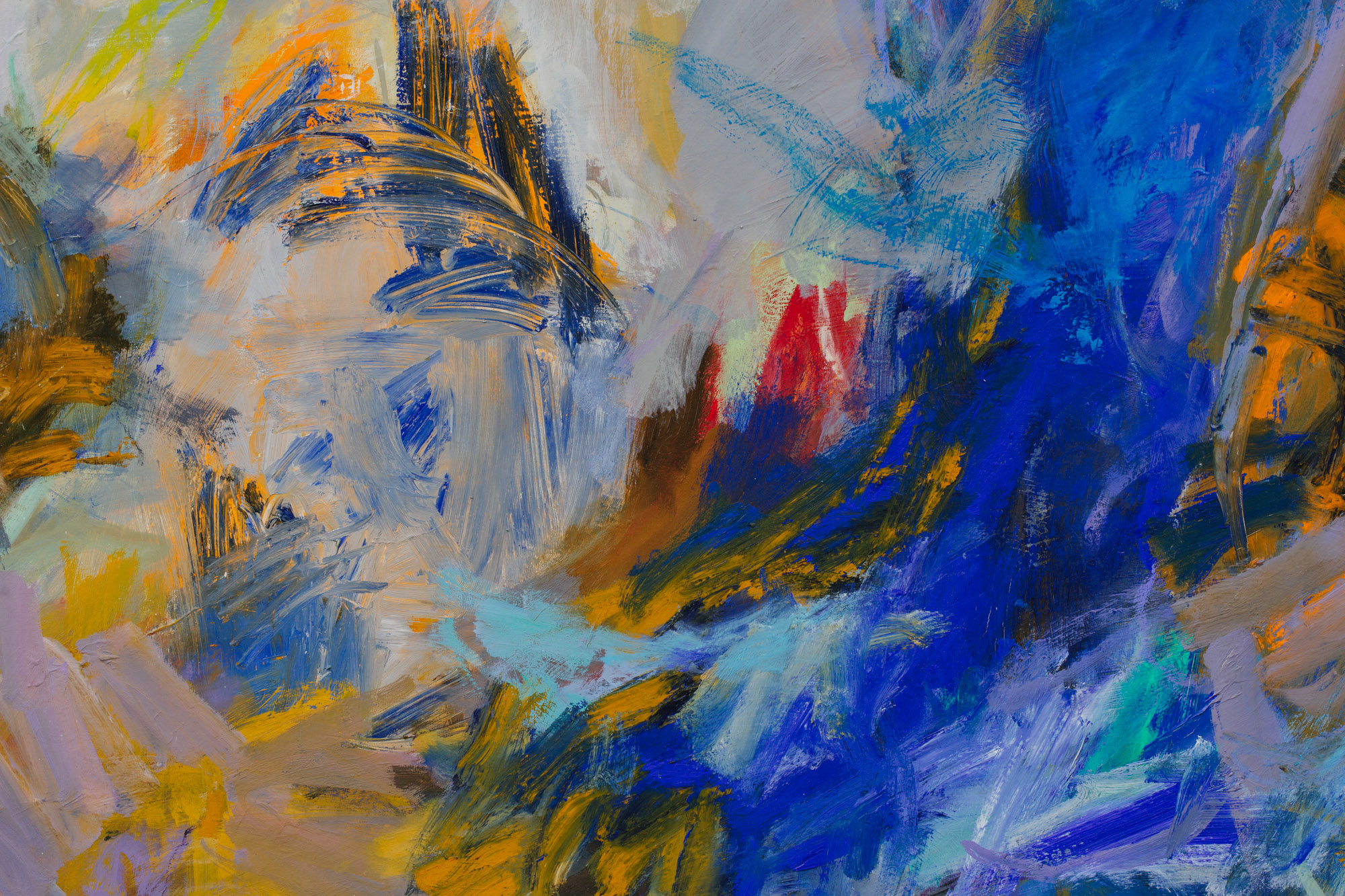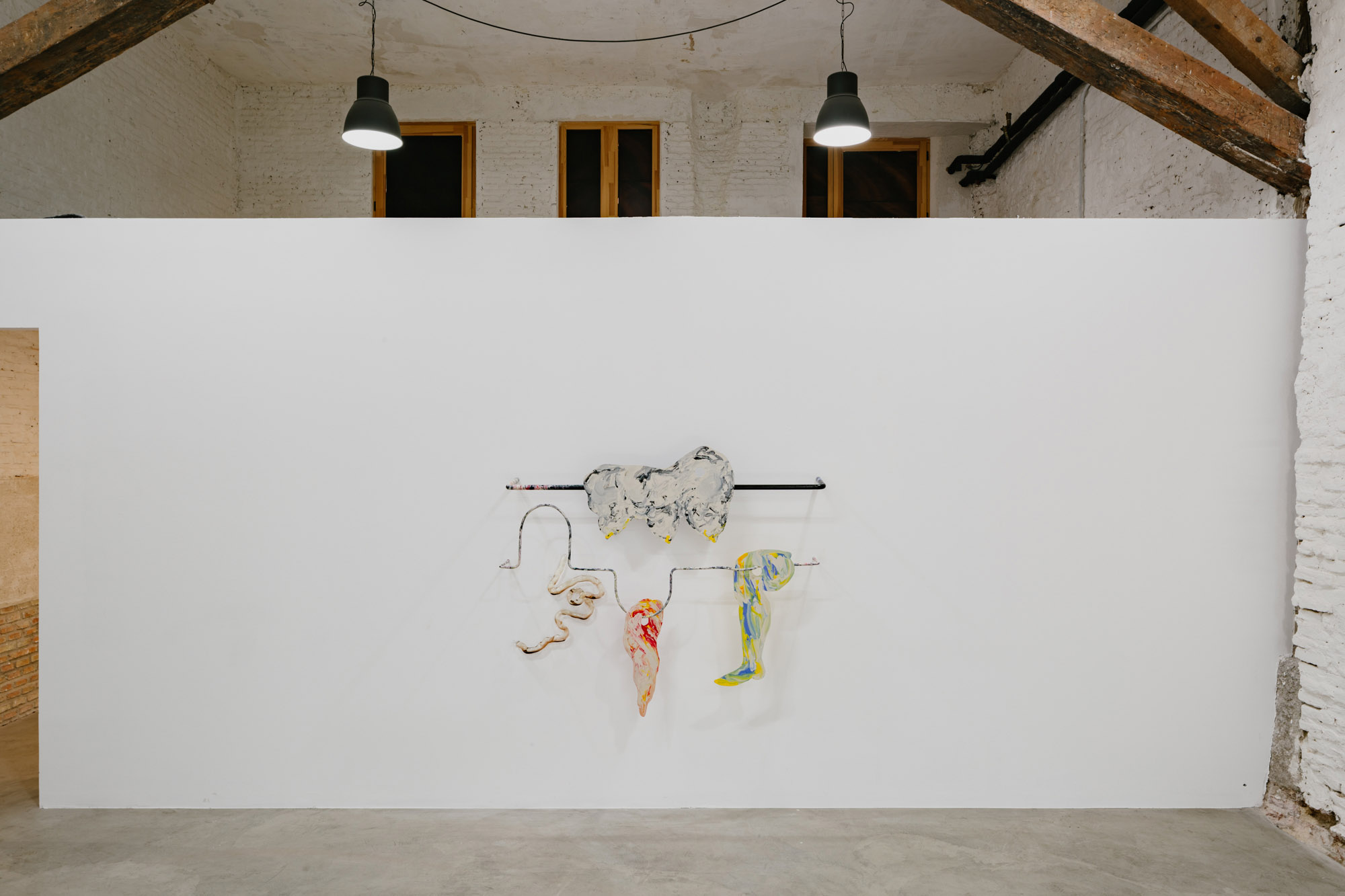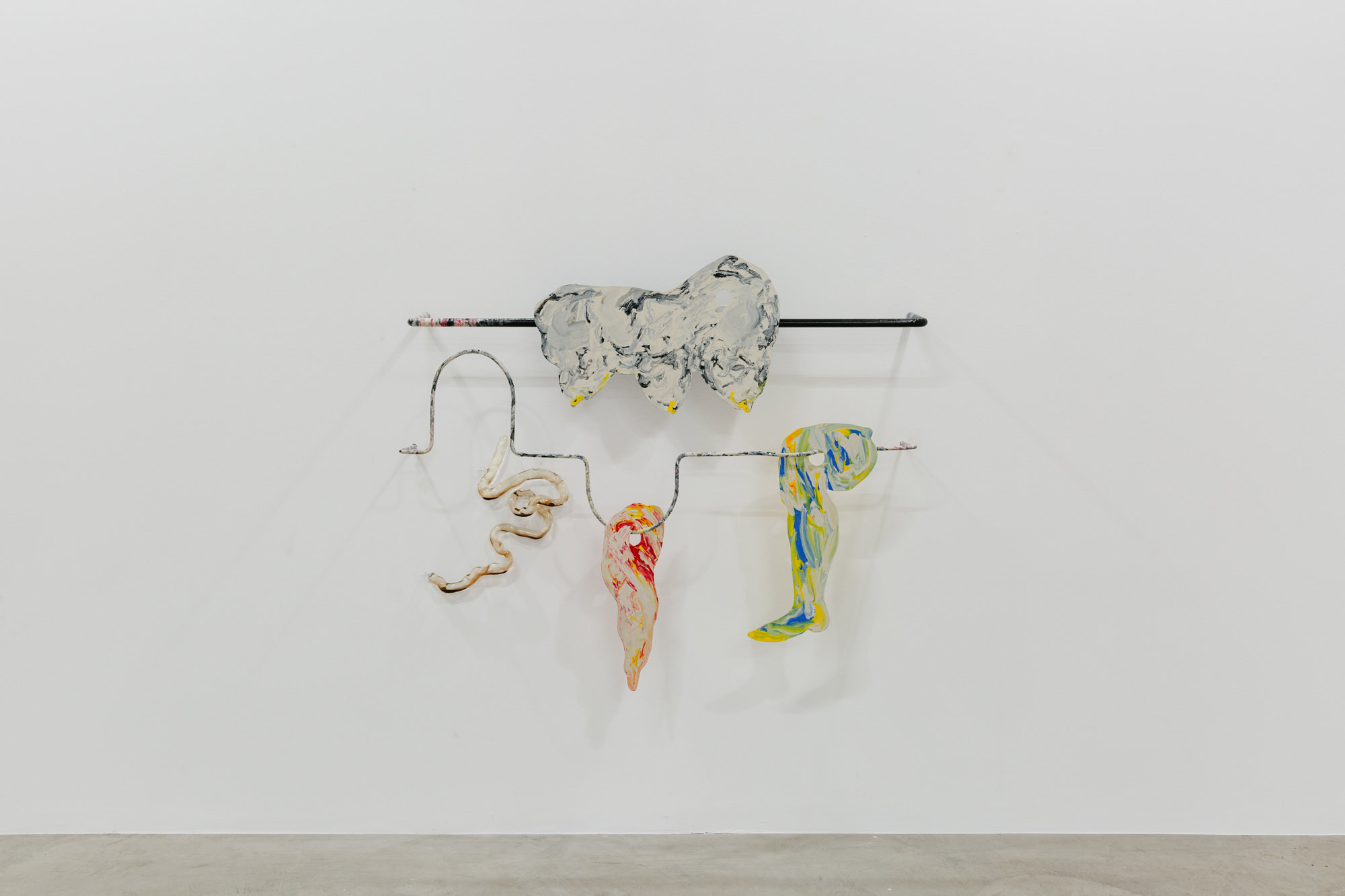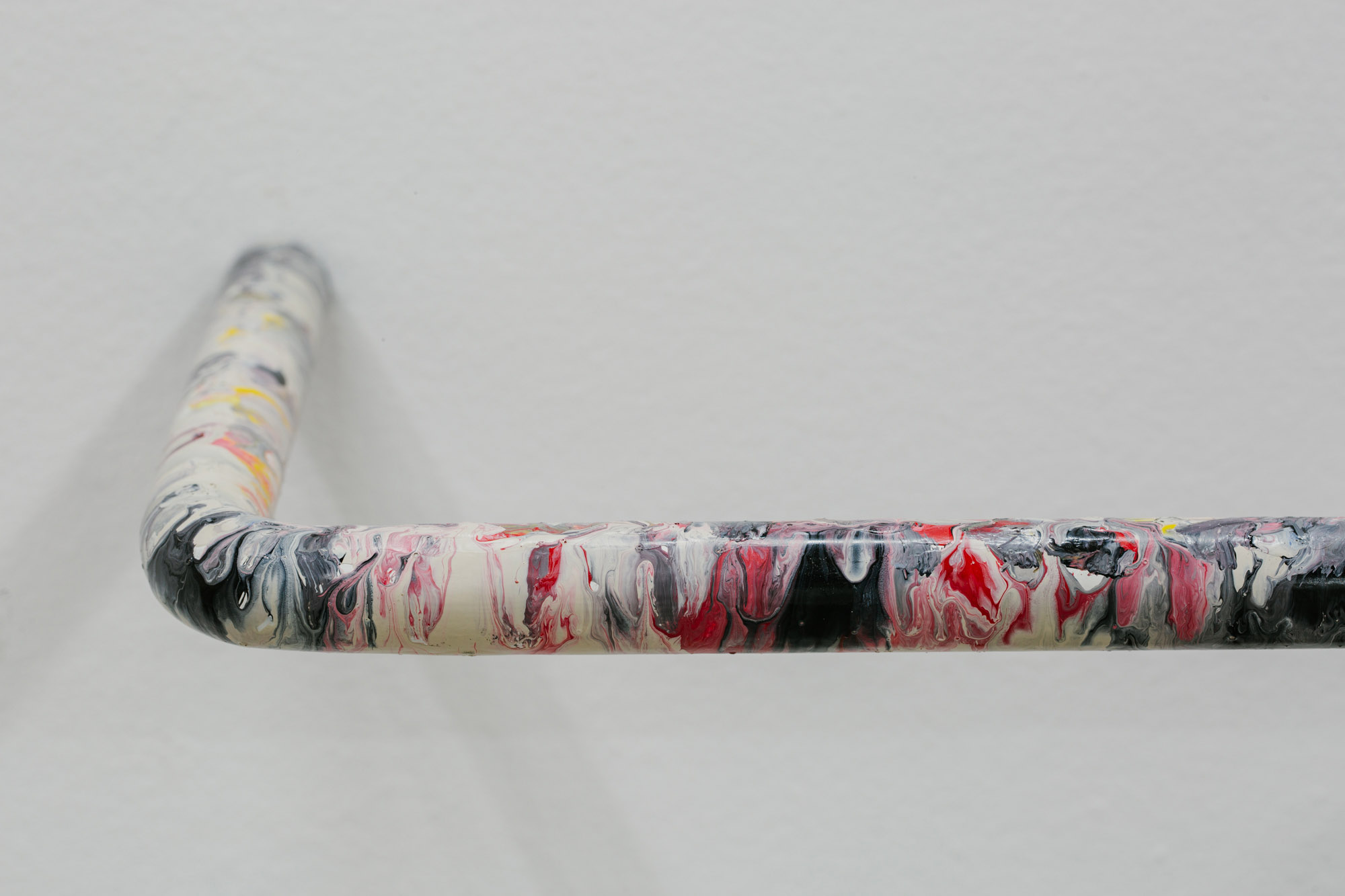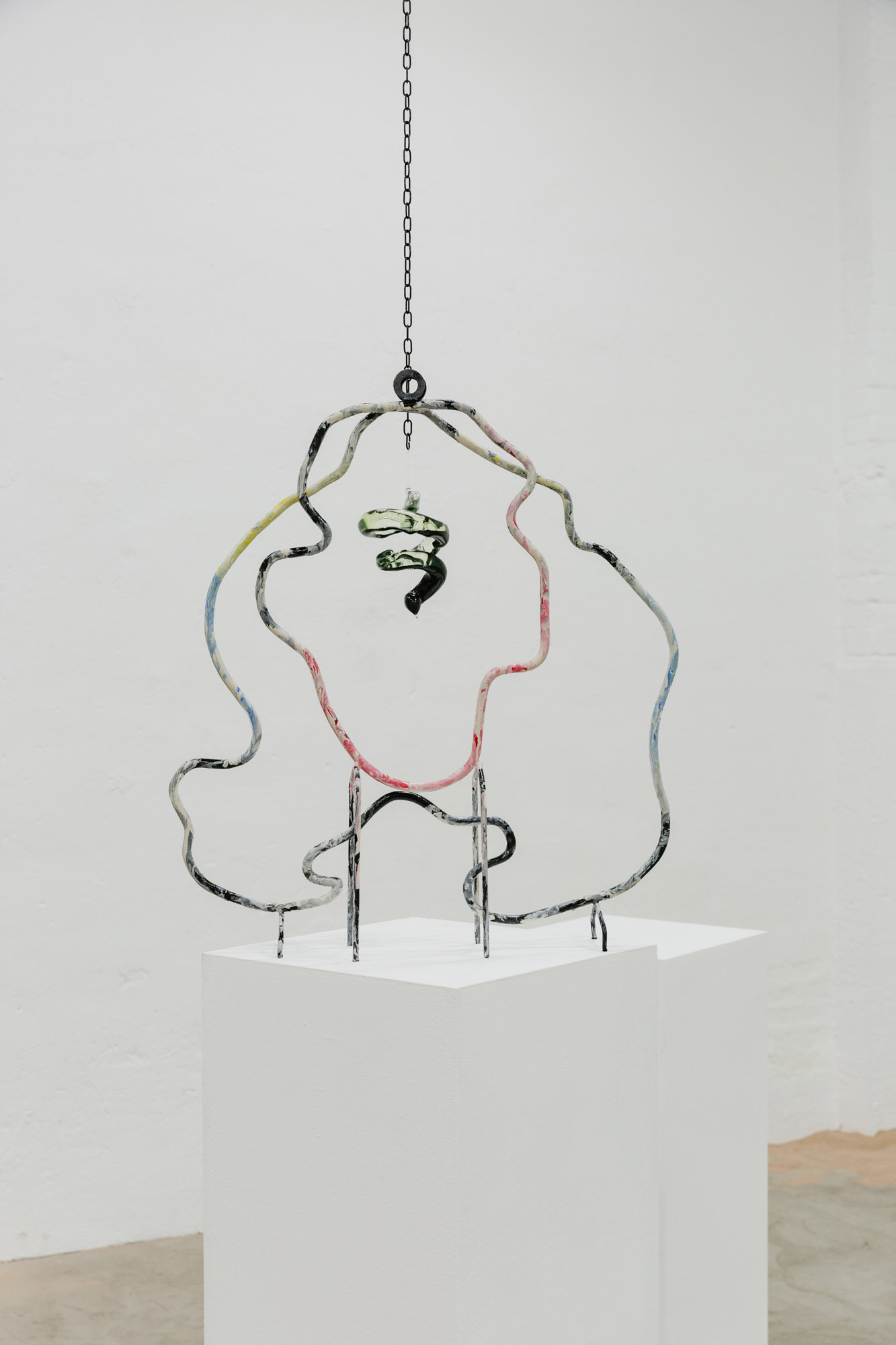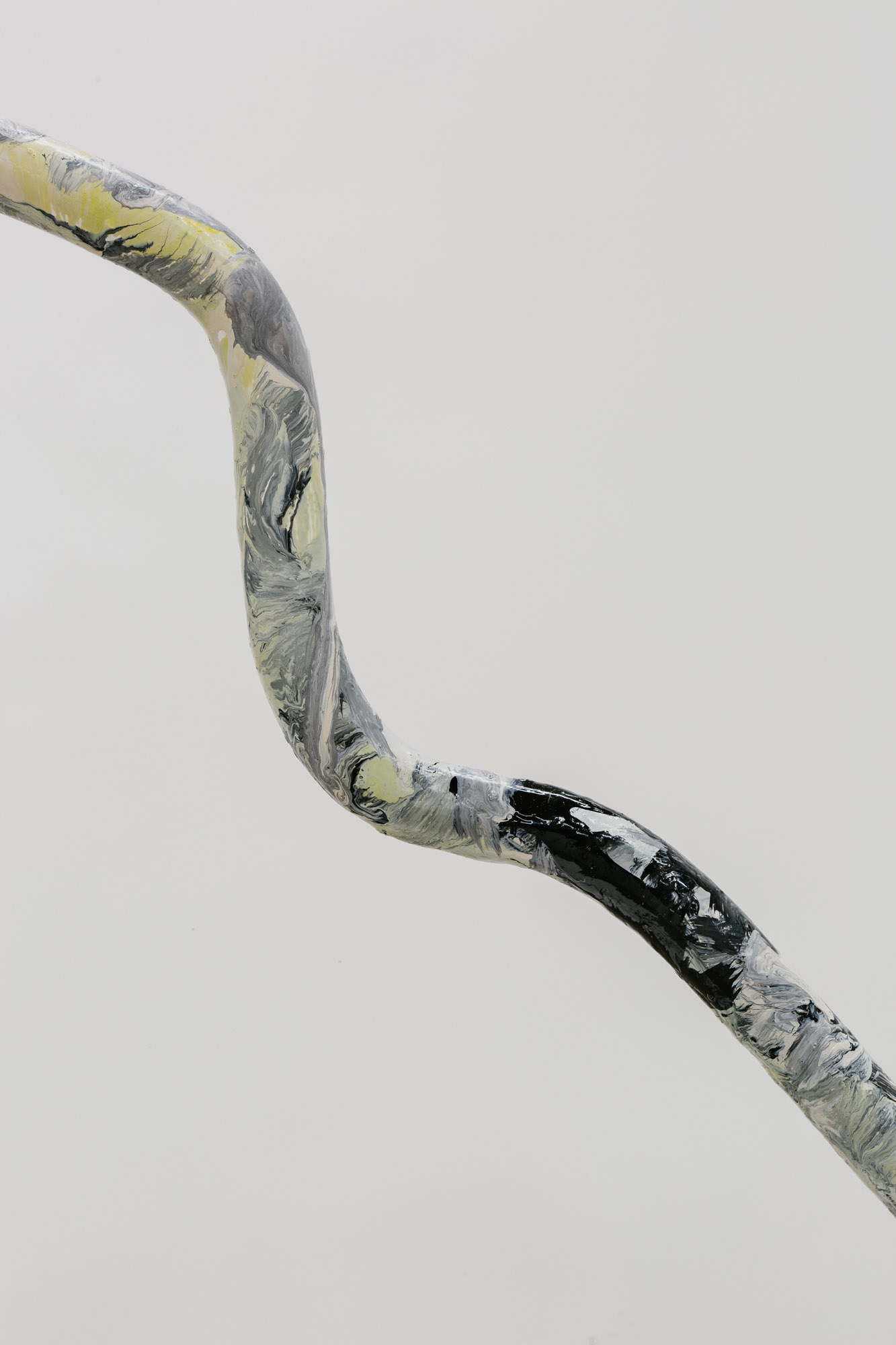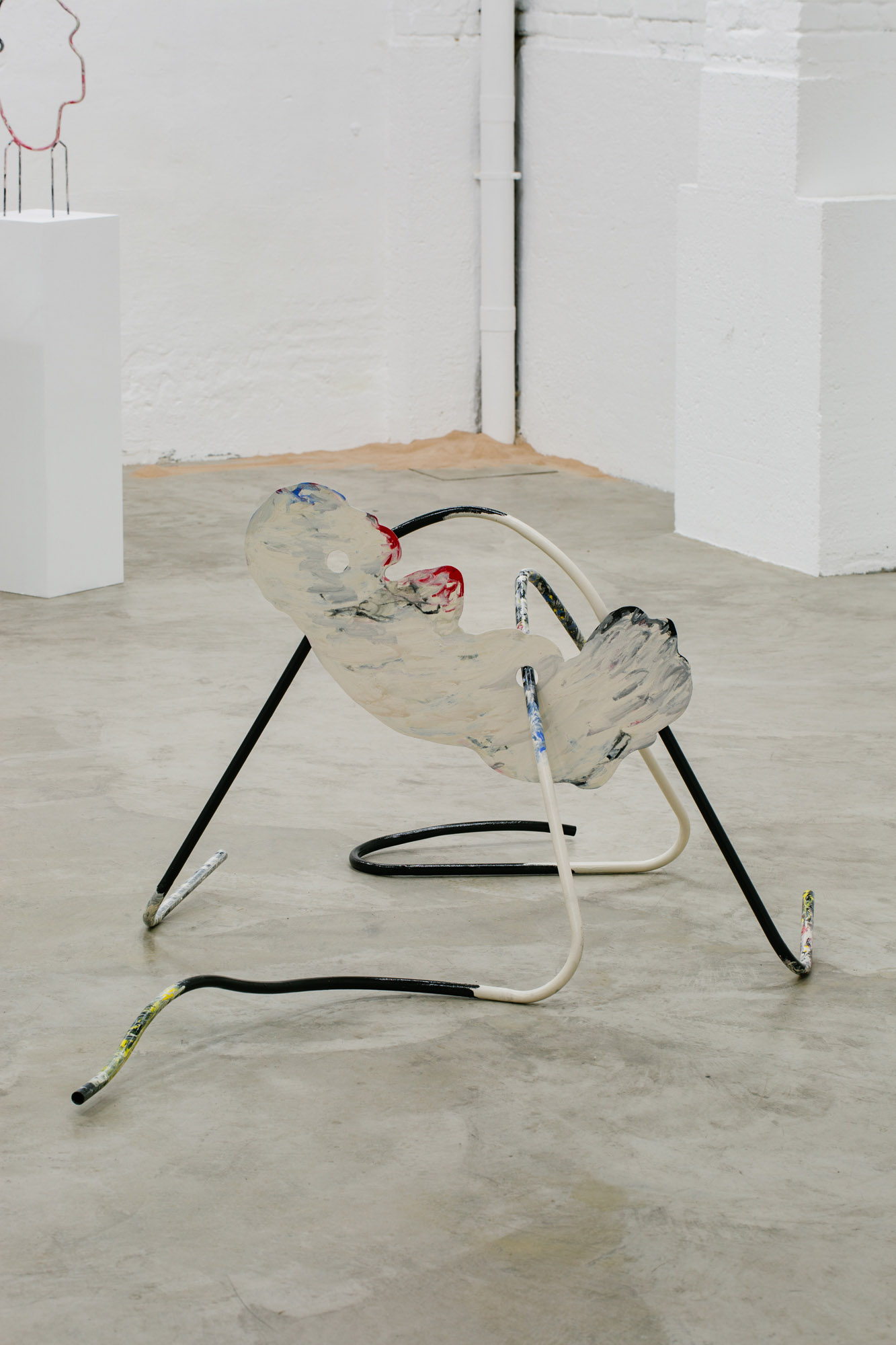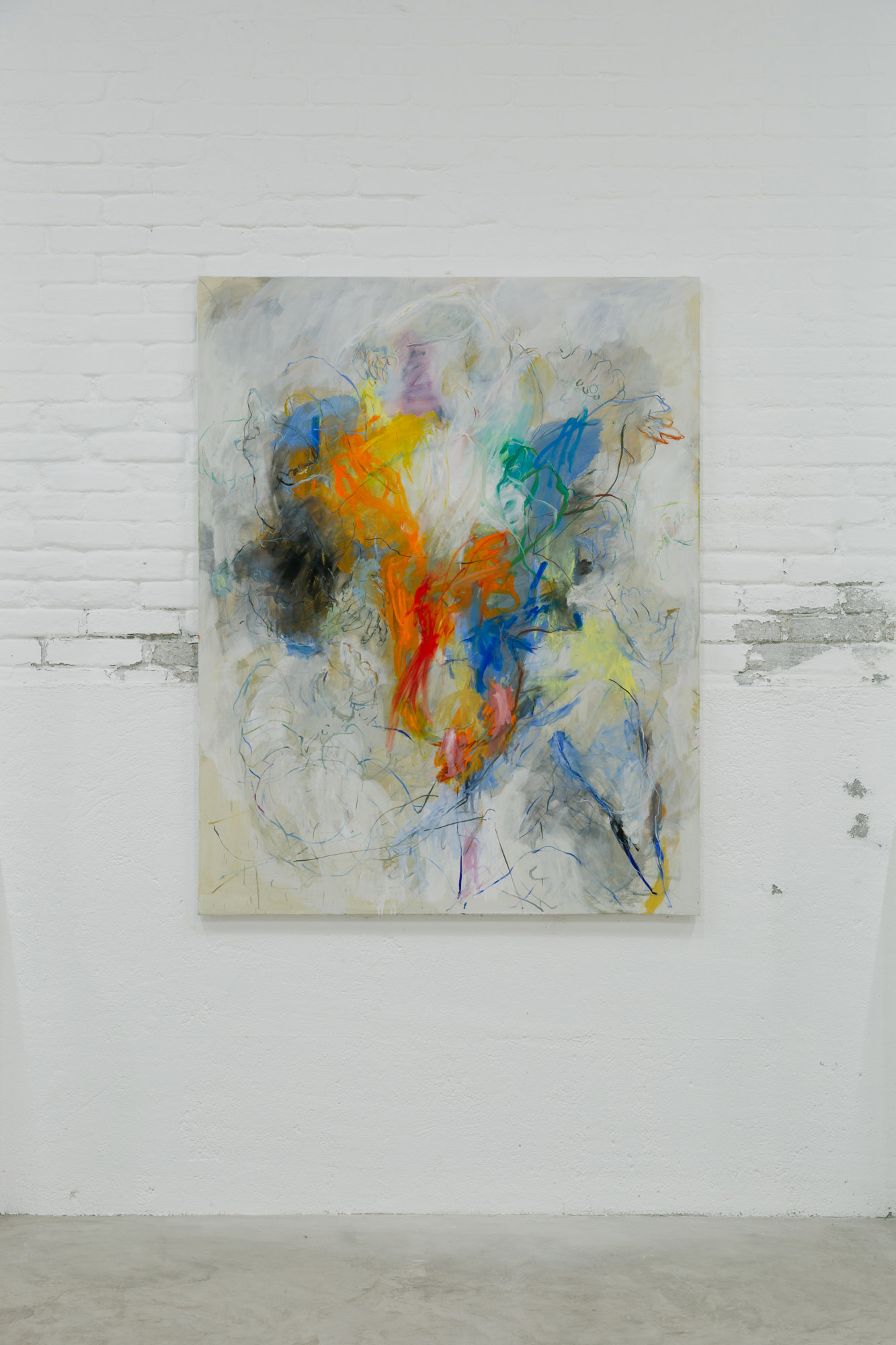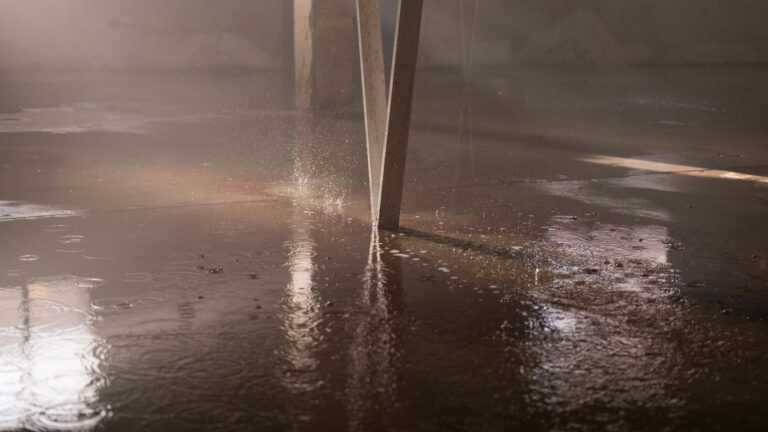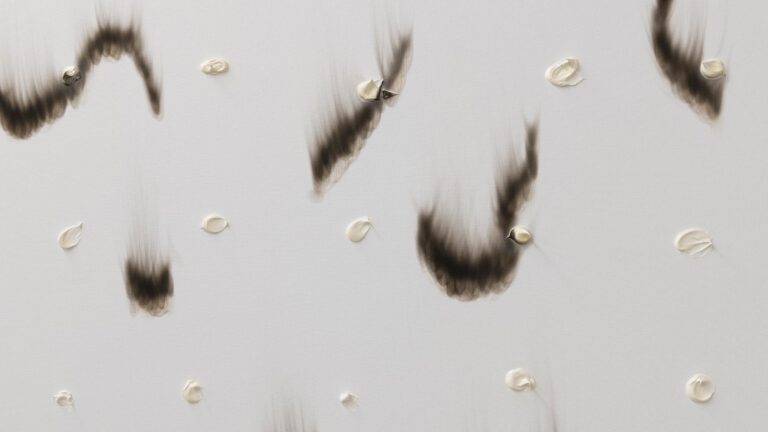Artist: Rosana Antolí
Exhibition title: The Worm
Venue: The Ryder, Madrid, Spain
Date: September 9 – November 12, 2022
Photography: Pablo Gómez Ogando / All images copyright and courtesy of the artist and The Ryder, Madrid/London
Tardigrades are microscopic eight-legged animals that can survive environments that most others can’t. For instance, tardigrades can go up to thirty years without food or water. They can also live in temperatures as cold as absolute zero or above boiling, at pressures six times that of the ocean’s deepest trenches. They are an amazing example of the nowadays overused concept of resilience because they understand the medium they inhabit, adapting to it instead of controlling it. This knowledge makes them practically indestructible.
For The Worm, Rosana Antolí looks at these beings that inhabit the subsoil, in conjunction with various concepts researched for previous projects. Drawn from fields such as biology, fiction and feminism, all these references, combined with the artist’s practice, result in an installation composed of an entirely new body of work that transforms the gallery into a kind of gigantic womb where life is made and occurs. Through a series of sculptures, paintings and videos, the artist raises the possibility of a way of life-based on existing with the world instead of being in it. This alternative way of living embraces its environment, dialoguing with it without dominating it, understanding there is some privilege that we must give up for a possible cohabitation.
The exhibition takes the form of a harmonious installation where each work exists in relation to the others, linked through multiple connections conceived by Antolí. For instance, all the sculptures on show contain a glass vessel filled with sea water and pigment. Just before these glass receptacles are closed forever, the artist insufflates her own breath inside them, creating a series of bubbles that, once enclosed, are constantly changing according to the pressure and the movement.
This sort of irrigation system in which the artist leaves the memory of her breath can be used as the itinerary to navigate the sculptures on show, discovering two distinct areas. On one side of the gallery, we find an anarchic space where a series of sculptures seem to be waiting to exist, one of them an intriguing, variegated form containing the majority of this primordial liquid that irrigates the other sculptures. This work functions as the source of energy that beats and gives life to all the others. Close to it, the visitor finds a combinable sculpture whose shape is undefined, composed of two elements that can exist on their own or form a united body. Giving this agency to the objects, the artist makes them owners of their own shape, in collaboration with the audience and the space. She thereby creates a life in suspension, waiting to be born.
On the other side of the gallery, a series of mobile sculptures suggest a group of bodies that, unlike the combinable sculptures, are unitary subjects with defined limits. However, these bodies are subject to constant movement, composed of rugged metal housings that serve as the skeletons of a series of works that remind us of the human. Breasts, legs and arms come together with no hierarchy to form objects that reject binary systems and whose strength does not come from what they are, but from what they could be.
For the first time, Antolí introduces pigment into her sculptures, bringing her characteristic visual repertoire to the surface of these works, which in turn draw gestures in the space. The artist thereby creates a way to produce that is also hybrid, combining sculpture, painting, drawing and movement, erasing the limits of these languages to expand their contours.
This new plastic approach to the sculptures directly links with the paintings that hang on the walls. It is precisely in these paintings that Antolí conceives a symbolic programme for this primordial temple, a narration that goes hand in hand with the sculptures and contains some of the references found during her research in the fields of biology and philosophy. Among these, we find the Turritopsis dohrnii, commonly known as the immortal jellyfish, which has inspired many of her past exhibitions; the exotic plant Welwitschia with its capacity to live beyond 1,000 years; and her latest investigations around the tardigrade. All these creatures live together on Antolí’s canvases, along with the texts that have influenced the artist’s creative process, such as The Carrier Bag Theory of Fiction by Ursula K. Le Guin. These coexist as well with the artist’s imagination that allows these paintings to talk even about her own dreams. Thus, her pictorial work aims to tell the story of a civilisation yet to come, combining figuration with her recurrent gestural expression. These works could be seen as historical friezes that show the lives of the gods from this primordial temple; they could also be portraits of nonexistent beings, but they could additionally be conceived as lucky charms that wish well to those who contemplate them.
In The Worm, Rosana Antolí gives shape to the investigations and working processes of the last few years. Her reading in the fields of biology, feminism and fiction acts as the driving force to imagine new forms of cohabitation and alternative futures and to continue with her investigations initiated during her show The Kick Inside, The Loop Outside at Tate Exchange, Tate Modern, London, 2019; expanded during her show Una edad de Oro at CentroCentro, Madrid, 2020; and recently explored in her solo show The Pond at CGAC (Centro Gallego de Arte Contemporáneo), Santiago de Compostela, 2022.
The Worm invites the viewer to navigate a space populated with performative and mutable objects to interact with. In a time of uncertainty where the threat of an end is never far away, Antolí invites us to look at new ways to be with the world, challenging the contours of what is considered human and imagining a future where different species can cohabit collaboratively.


